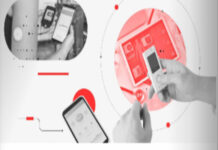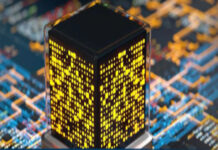Technology has always helped human to make their lives comfortable, meaningful and powerful. Scientists and engineers are always engrossed to innovate and develop new technological ideas and devices which are changing the lives of people all over the world. Technology only can help in making a better change in the human lives going above all impediments like economic background, caste and creed, region and religion. Epidemics and pandemics has generally happen on earth from time to time but what is the difference today is the availability and use of sophisticated technologies that can, and in a lot of ways are, proving to be critical in combating the Corona virus. Thanks to technological advancements that we are more equipped than any era in the history to respond to a pandemic. In the present times when the world is facing an unprecedented challenge to fight against corona virus COVID-19, people are again looking towards affordable, fast, favorable, suitable and useful technological developments. The development and access to new technology will not only accelerate combating the current pandemic but new technology and scientific discovery will also enable and better prepare the society for future crises. Further, sharing expertise, resources and technology can help to speed up work that is going to save lives and expand access to critical services around the globe.
Technology underpins critical products and services that global communities, governments and healthcare organizations depend on every day. It is hoped that by harnessing the expertise, resources, technology and talents, can help save and enrich lives by solving the world’s greatest challenges through the creation and development of new technology-based innovations and approaches. Technologies are not only helping society to combat COVID-19 but are also playing a crucial role in keeping our society functional in a time of lockdowns and quarantines. Technological development will accelerate advances in diagnosis, treatment and vaccine development, influencing other technologies also such as artificial intelligence (AI), high-performance computing and edge-to-cloud service delivery. Healthcare and life sciences manufacturers will increase the availability of technology and solutions used by hospitals to diagnose and treat COVID-19. Technology development for combating COVID-19 will also support the creation of industry alliances which will accelerate worldwide capacity, capability and policy to respond such crisis in future.
During the time of SARS outbreak in 2002, it took scientists more than a year to decode the genome of the virus, whereas thanks to technology advancements, the Corona virus genome was identified within a month. Had it not been with effective and advanced technology solutions, we would have been staring at an unmanageable crisis. China illustrates this case. By mustering resources at its disposal and deploying the latest technology, the country has mitigated the effects of the virus to a significant extent and profiled people at risk. Today, several affected countries have used a range of technologies in their fight against the pandemic and are looking at the model of best use of technology to save their populations in this race against time. Digital technology has been widely used to help limit the spread of corona virus. A growing number of technology companies and IT pros are working in a variety of ways to help fight the ongoing corona virus pandemic. Some of the new gadgets designed to fight COVID-19 has ushered in a new era of urgent innovation. Here is brief summary on how technology at different levels is helping to fight COVID-19 pandemic.
Online learning: Initiatives taken by different industries/organizations will support education-focused nonprofit organizations and business partners to provide students without access to technology with devices and online learning resources. The initiative will enable computer availability, online virtual resources, study-at-home guides and device connectivity assistance.
Positioning technologies: It is well known that positioning technologies play a crucial role during the time of crisis and disasters. In the case of epidemics and outbreaks too, such technologies comes in quite handy and help to track patients and affected places, thus containing the virus, apart from analyzing the pattern of the outbreak. Reliable data and precise mapping and imagery could help towards building of new makeshift hospitals across the country, for transportation planning, to transport essential relief goods faster, to monitor congested public areas and relaying real-time information about the pandemic safety measures to people.
Satellite monitoring: Progress at various sectors involving in pandemic combating can be continuously monitored using a constellation of high-resolution earth observation satellites.
Robotics: From preparing meals at hospitals, doubling up as waiters in restaurants, spraying disinfectants to vending rice and dispensing hand sanitizers, robots are on the frontline to prevent the spread of Corona virus. In many hospitals, robots are also performing diagnosis and conducting thermal imaging of people. Robots are also being used to transport medical samples from collection site to testing labs. Smart transportation Robots carries food and medicine to patients from healthcare providers without any human contact.
Internet of Things: Most of the devices in the hospital are coming as IoT enabled and services are carried out by robots. The initial screening of the patients is done by 5G-enabled thermometers that send instant updates. Also, there are rings and bracelets that are connected to the AI platform so that it can monitor all changes in the body.
Health sensors and apps: Sophisticated and expansive surveillance network can be used for public good in order to develop a color-coded health rating system that can track millions of people daily. The smartphone apps (e.g., Aarogya Setu) can warn people about the dangers of infections as well as can assign three colors to people – green, yellow and red – on the basis of their travel and medical histories which help to take further decision about quarantine status of the person. Technology is claimed to have come up with a special facial recognition that can accurately recognize people even if they are masked. Smartphone apps are also being used to keep a tab on people’s movements and ascertain whether or not they have been in contact with an infected person.
Drones: In some of the severely affected areas, where humans were at a risk of catching the virus, drones came to the rescue. Drones were transporting both medical equipment and patient samples, saving time and enhancing the speed of deliveries, while preventing contamination of medical samples. Drones were also flying with QR code placards that could be scanned to register health information. Agricultural drones were spraying disinfectants in the countryside. Drones powered with facial recognition were also being used to broadcast warnings to the citizens to not step out of their homes, and scold them for not wearing face masks.
Big Data and facial recognition: Access to public information has led to the creation of dashboards that are continuously monitoring the virus. Several organizations are developing dashboards using Big Data for face recognition and infrared temperature detection techniques to be installed in all over places where people’s gatherings are more.
Artificial Intelligence: With the help of data analytics and predictive models, medical professionals are able to understand more about a lot of diseases. Algorithms are available that are fighting the outbreak by predicting the structure of the virus. AI-powered infrared system can effectively screen large populations to detect change in a person’s body temperature.
Autonomous vehicles: At a time of severe crunch of healthcare professionals and the risk of people-to-people contact, autonomous vehicles are proving to be of great utility in delivering essential goods like medicines and food items and for disinfestations services.
Use of GIS: It enables real-time visual display of epidemic data. After the epidemic information concerning provincial and municipal health commission and emergency headquarters is released, it can be immediately mapped and the spatial, temporal and quantitative features of the epidemic data can be visually displayed on maps. This can express the geospatial positioning information of counties, townships, villages and groups, and further provide accurate base map foundation for the epidemic data-on-map within the province. Users can easily assess the epidemic risk level distribution of surroundings, city statistics, location of confirmed cases and distribution of fixed-point hospital and fever clinics. This map can provide scientific and effective technical support for the establishment of an effective early warning mechanism and prevention and control policies.
Indian groundwork
The surge in technological innovation as a need is also drawing comparisons to another era of great pressure and great ingenuity. India is also making best use of technology to combat covid-19 and the facilities available are: mapping each Covid-19 positive case using GIS, tracking health care workers using GPS and heat mapping technologies to assign containment area plans. Countries has sufficient preparedness in terms of hospital beds, testing kits, testing facilities, PPE, masks, ventilators etc. to deal with the COVID-19. Many Indian institutes like IITs, NITs, Engineering colleges, industries and DRDO has come forward with the development of many products for combating COVID-19. Indian scientists have already come up with nearly 200 tech solutions to fight COVID-19 including tracing and testing solutions, and research activities on treatment or prevention such as repurposing of existing drugs to either treat existing patients or prevent frontline health staff from being infected. Production list of equipments for combating of COVID-19 at DRDO laboratories is as: Automatic Hand Sanitizer Dispensing Unit, Hand Surface Sanitizers, UV Based Disinfection Devices, Personnel Vehicle Area Sanitization Equipment, Sample Collection Enclosures, Hospital Aids, Mobile Labs, PPE, Robots and Miscellaneous.
Going forward
While such advanced technologies have come to the rescue of millions at such a critical time, they have come at a heavy cost – as far as privacy is concerned. There is no doubt that extraordinary times call for extraordinary measures, and getting rid of the virus, saving lives and resuming normalcy is of paramount interest. This has necessitated that the contentious privacy versus security debate is not so important.

















